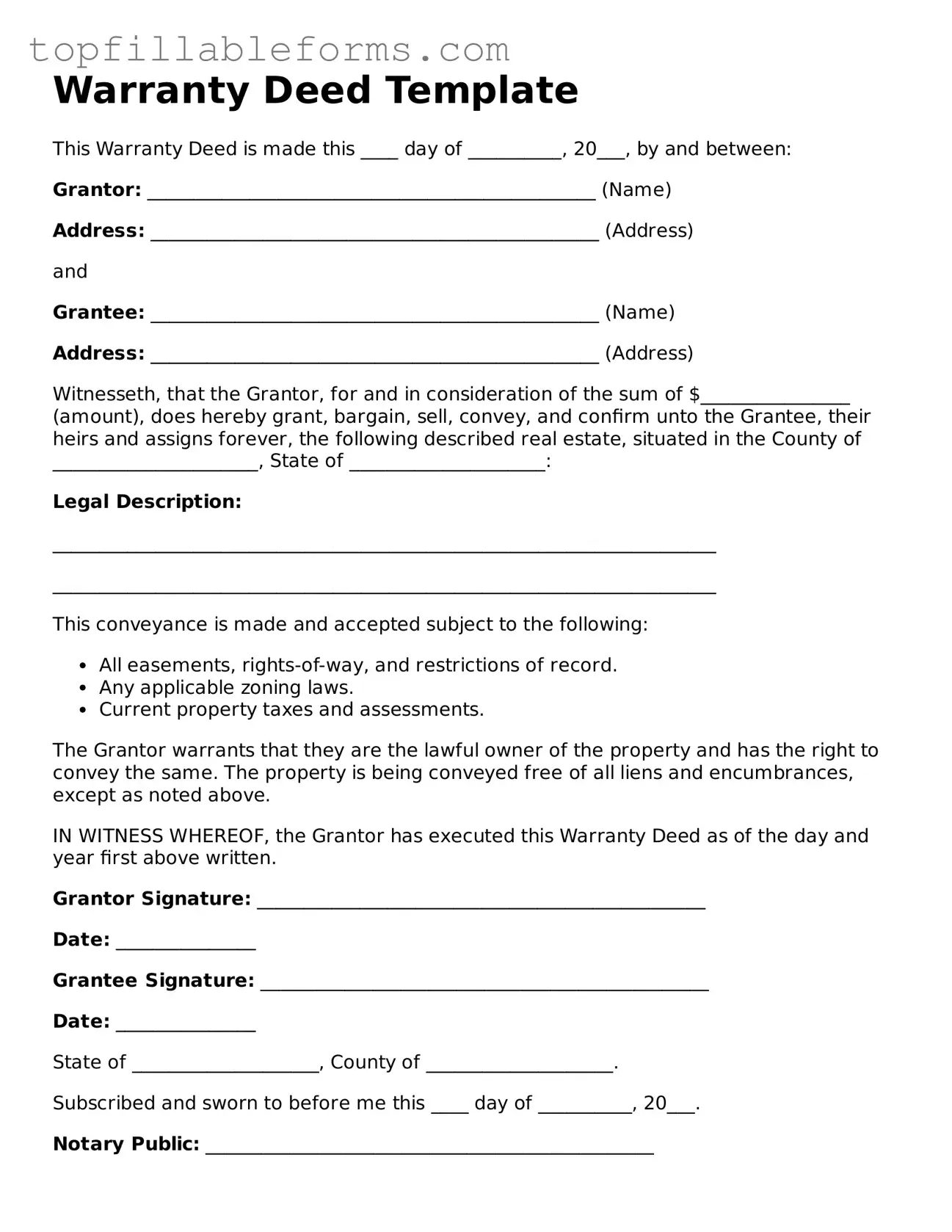Warranty Deed Template
This Warranty Deed is made this ____ day of __________, 20___, by and between:
Grantor: ________________________________________________ (Name)
Address: ________________________________________________ (Address)
and
Grantee: ________________________________________________ (Name)
Address: ________________________________________________ (Address)
Witnesseth, that the Grantor, for and in consideration of the sum of $________________ (amount), does hereby grant, bargain, sell, convey, and confirm unto the Grantee, their heirs and assigns forever, the following described real estate, situated in the County of ______________________, State of _____________________:
Legal Description:
_______________________________________________________________________
_______________________________________________________________________
This conveyance is made and accepted subject to the following:
- All easements, rights-of-way, and restrictions of record.
- Any applicable zoning laws.
- Current property taxes and assessments.
The Grantor warrants that they are the lawful owner of the property and has the right to convey the same. The property is being conveyed free of all liens and encumbrances, except as noted above.
IN WITNESS WHEREOF, the Grantor has executed this Warranty Deed as of the day and year first above written.
Grantor Signature: ________________________________________________
Date: _______________
Grantee Signature: ________________________________________________
Date: _______________
State of ____________________, County of ____________________.
Subscribed and sworn to before me this ____ day of __________, 20___.
Notary Public: ________________________________________________
My Commission Expires: ______________________________________
